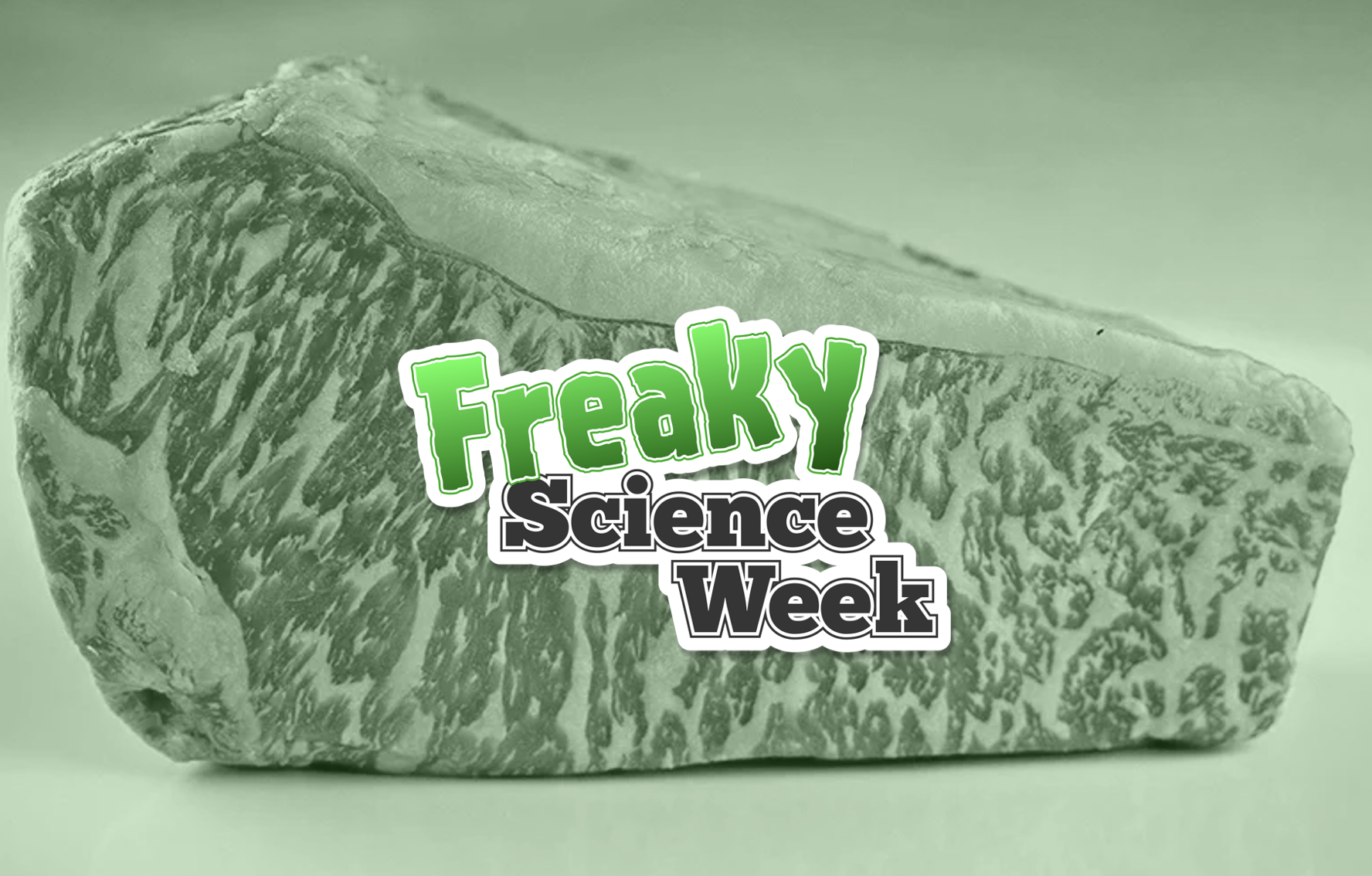Feast of the Fake Steak
Synthetic biology could revolutionize your belly - and beyond

This week, Questionist asks and answers the question, “What have scientists been up to lately that should scare the bejeezus out of us?” On Monday we covered in-vitro gametogenesis, on Tuesday robotic bees, Wednesday necrobotics, and Thursday electronic skin. Thanks for reading – and sleep tight!
Revolutionary—that’s the word we use to describe certain big advancements, be it in medicine, food, or material production. But what would we call something that could change ALL of it? We would need a much bigger word.
For now, we call it synthetic biology. Essentially, SynBio harnesses the power of nature with the goal of redesigning cells so they can serve a new purpose. Proponents say that people alive today (maybe not you, centenarians) will live to see advancements the likes of which we have only seen in the sci-fi movies of the past. And it’s not decades away, SynBio is aggressively knocking at the door.
Synthetic biology, at its core, starts with DNA. Remember the Human Genome Project? Scientists can now isolate and study DNA in order to reprogram, manipulate, and build upon it—much like writing computer code—so it serves a different function.
Okay, it sounds like the freaky stuff that Freaky Science week is made of. But what type of applications are we talking about here really? Let’s start with the most in-your-face of them all: Food.
Meet the new meat
Soon, animals will be fired en masse from their jobs as slaughterhouse victims. Instead, scientists choose a “perfect” animal specimen from each species and use its stem cells as the foundation for the new meat. Natural amino acids and carbohydrates are added to promote growth into muscle fibers. The result—lab-grown, or cultured, meat, which was cleared for sale in the U.S. earlier this year.
This “meat” already has a big fan base. People who have tried it say it has a savory and rich taste. Plus—and it’s a big plus—only 0.5 grams of cow muscle can be used to make up to 4.4 billion pounds of beef. All without killing any animals, passing dangerous diseases to the consumer, the whole beef-driven rise in global antibiotic resistance, clearing forests for grazing cattle, plus we do away with all those cow farts and burps. An underreported fact from that last link: Beef is by far the food that does the most environmental damage per pound – like six times that of pork and seven times chicken. But lab-grown versions of those meats are in the works as well.
Vegetarians and vegans will have options too. Sure, the Impossible Burger is already out there—the plant-based burger is already available for order in 17,000 restaurants (if you call Burger King a restaurant). But there is a new vegetarian meat in town: Since 2021, an Israeli startup has been making one that’s plant-based, whole-cut (you can get a juicy steak, not just a burger), and entirely 3D-printed.
But it’s not just the meat. SynBio is changing many aspects of agriculture. Crops are being modified to contain more nutrients (such as this rice developed to be rich in beta-carotene), to be resistant to fungus, or to require less water and fertilizer. There is also the development of hypoallergenic peanuts and the chlorella algae being engineered to generate butter and oil.
Stuff you can’t eat
When it comes to medicine, synthetic biology is creating an entirely new frontier. Just look at vaccine development, in particular, the recent Covid mRNA vaccine which is being hailed as the next generation of therapeutics. (The scientists who developed it just won the Nobel medicine prize).
Another big medical breakthrough is personalized medicine. Scientists could custom-make your treatment for cancer, immune diseases, and metabolic diseases. Because these conditions are also leading causes of death, it is literally a life-saving breakthrough.
In the manufacturing world, artificial spider silk is already being used in the development of cars and airplanes. (It’s five times stronger than steel). Materials made of mushrooms and bacteria that bind sand together to make bricks will transform the construction industry. And scientists are studying how microorganisms capture carbon dioxide, in order to convert it into fuel for airplanes and cars. And these examples are only the tip of the SynBio iceberg.
Too good to be true?
As always, the speed of the advancements have to give us pause. For all the benefits, if we fully lean into SynBio, could environmental ecosystems that have existed for thousands of years potentially be neglected, supplanted, polluted, wiped out by new “beneficial-to-humans” technologies? (We ruined it, so now we must fix it at all costs!)
The relationship between medicine and profit motive is already an uneasy on. So when it comes to treating and curing diseases, will SynBio technology be affordable, or will it create an even deeper divide between the haves and have-nots?
If researchers can re-create poliovirus using synthetic biology – and oh by the way, they already have – then what’s to stop bad actors from turning them into bio-weapons? (Bill Gates and Hollywood have been warning us for a long time!)
There are many “cons” of using synthetic biology, we just hope the scale is tipped towards the “pros”. Maybe we can still strive for a perfect world without hunger, sickness, war, or environmental disasters. In the meantime, pass the steak sauce, would ya?
Photo illustration: H. Alexander Talbot, CC BY 2.0 via Wikimedia Commons / Questionist
